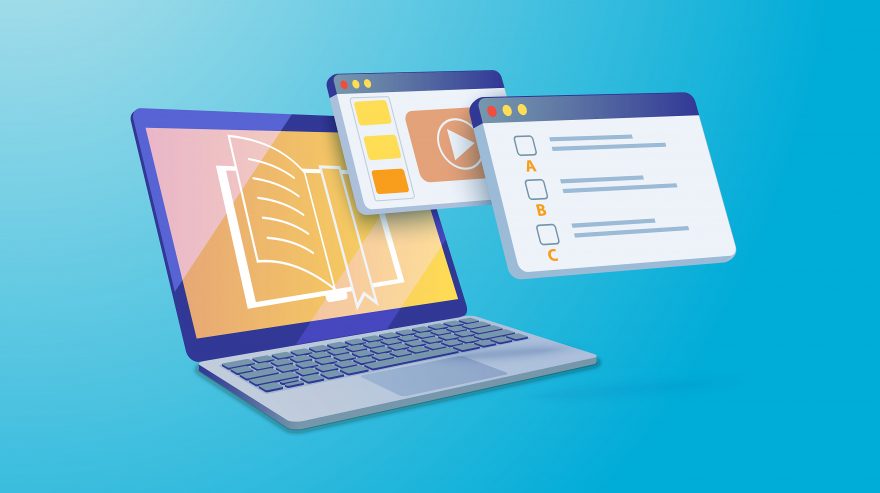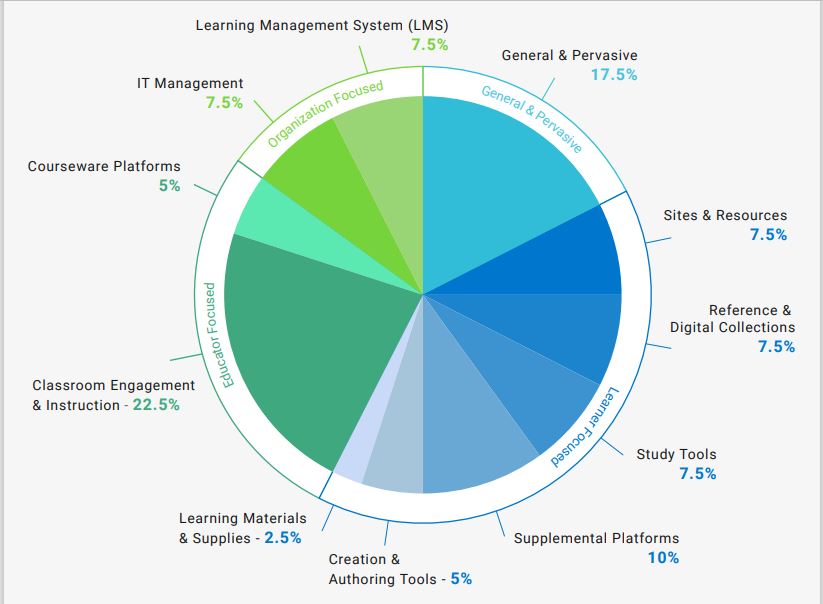What Are the Most Widely Used Ed-Tech Tools in Districts?

The types of ed-tech products that school districts access is shifting away from more independent student resources in favor of educator-focused tools.
A mid-year report from LearnPlatform looked at the use of ed tech in K-12 districts across the country between August and December 2021 — a time when, a year and a half into the pandemic, many districts started sorting through purchases made during remote learning to decide how digital tools will be used moving forward.
School districts accessed an average of 1,403 ed-tech solutions each month, the report found. Educators used an average of 86 ed-tech solutions over the four-month period, while students accessed an average of 74.
The analysis is based on real-time online activity data from more than 228,000 educators and 2 million students, collected by LearnPlatform using a plug-in on Google’s Chrome browser.
LearnPlatform — a developer of tools that seeks to help districts and states organize, streamline, and analyze ed-tech — then identifies and ranks the individual products that were most popular, based on the percentage of users.
The top 10 digital tools accessed most often in school districts remained dominated by Google products. The list, in order of usage, is as follows:
- Google Docs
- Google Slides
- YouTube
- Google Drive
- Google Forms
- Kahoot!
- Clever
- Google Classroom
- Google Sites
- Google Sheets
Kahoot!, a classroom engagement tool, rose one spot to place #6, while SSO platform Clever rose five spots to rank #7. Video conferencing platform Zoom fell in usage, dropping 11 places to #20.
More broadly, learner-focused tools, such as supplemental platforms, saw usage fall compared to the previous school year. Supplemental platform usage dropped from 17.5 percent to 10 percent.
Meanwhile, organization- and educator-focused tools saw increases — a change that seems to align with the end of remote learning and return to classrooms.
The following graphic shows the breakdown of products in use in districts, as measured by LearnPlatform.
Learning management systems, which the report lists as an organization tool, increased from 5 percent of district’s usage to 7.5 percent.
Classroom engagement and instruction tools, which are considered educator-focused, jumped from 17.5 percent to 22.5 percent.
There was also an increase in the use of study tools, from 5 percent to 7.5 percent.
Karl Rectanus, CEO and co-founder of the company that conducted the analysis, said the increase in the classroom engagement and instruction category, “is noticeable and heartening.” Especially when paired with the slight drop off in video tools.
“This seems to indicate that teaching and learning in the first semester was just as tech-enabled as during hybrid/remote,” Rectanus said in an email, “but likely reflected more of the interactivity we know works better for retention, social-emotional health, and relationship-building for students.”
The learning management system Schoology was new to the Top 40 list, ranking #22, along with the online assessment and instruction tool developed by Curriculum Associates, i-Ready(#32); classroom gameshow Gimkit(#35); study tool Grammarly(#39); and curriculum provider McGraw-Hill Education(#40).
Follow EdWeek Market Brief on Twitter @EdMarketBrief or connect with us on LinkedIn.
See also:

